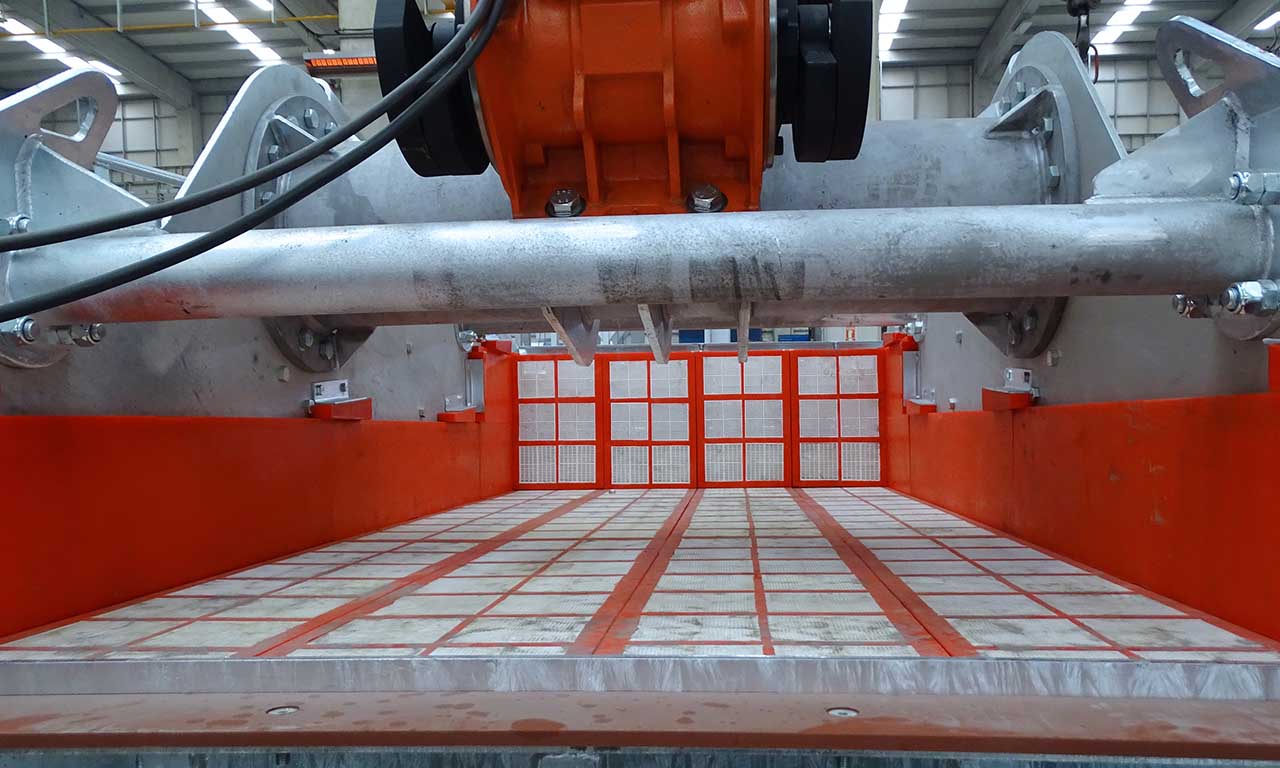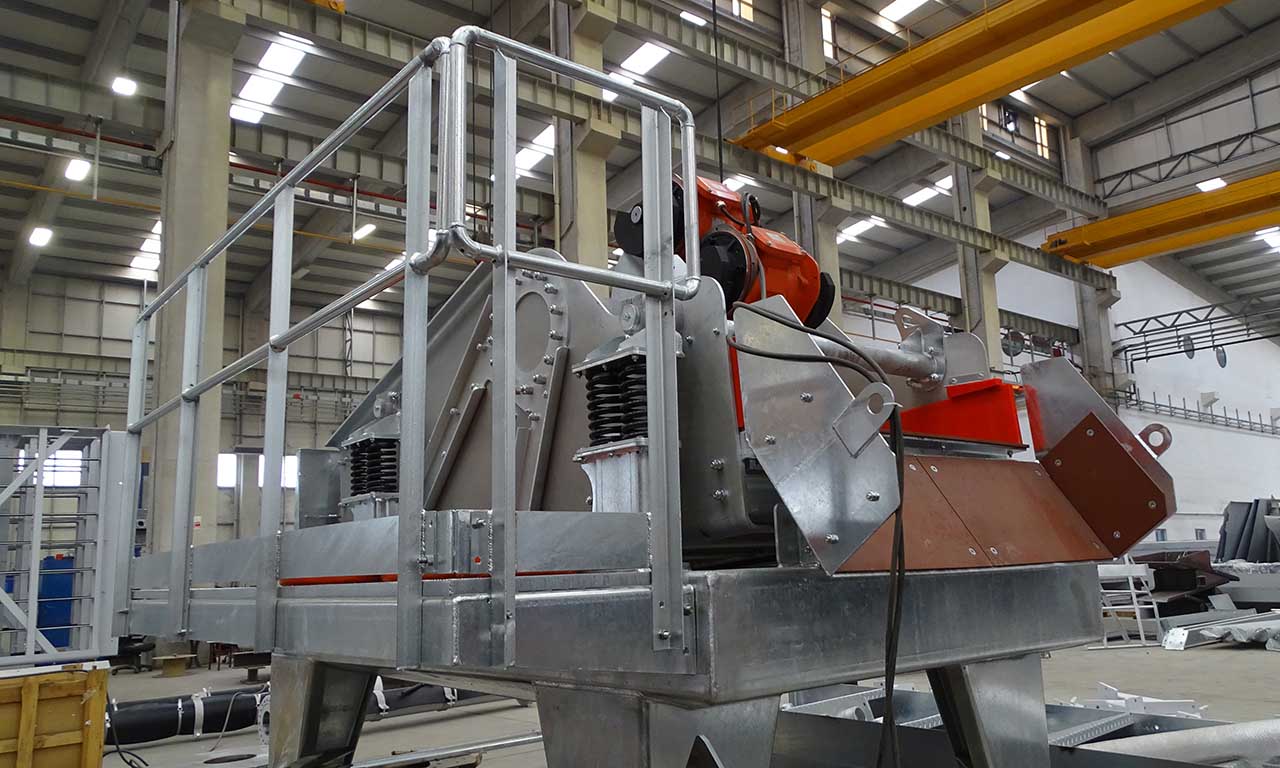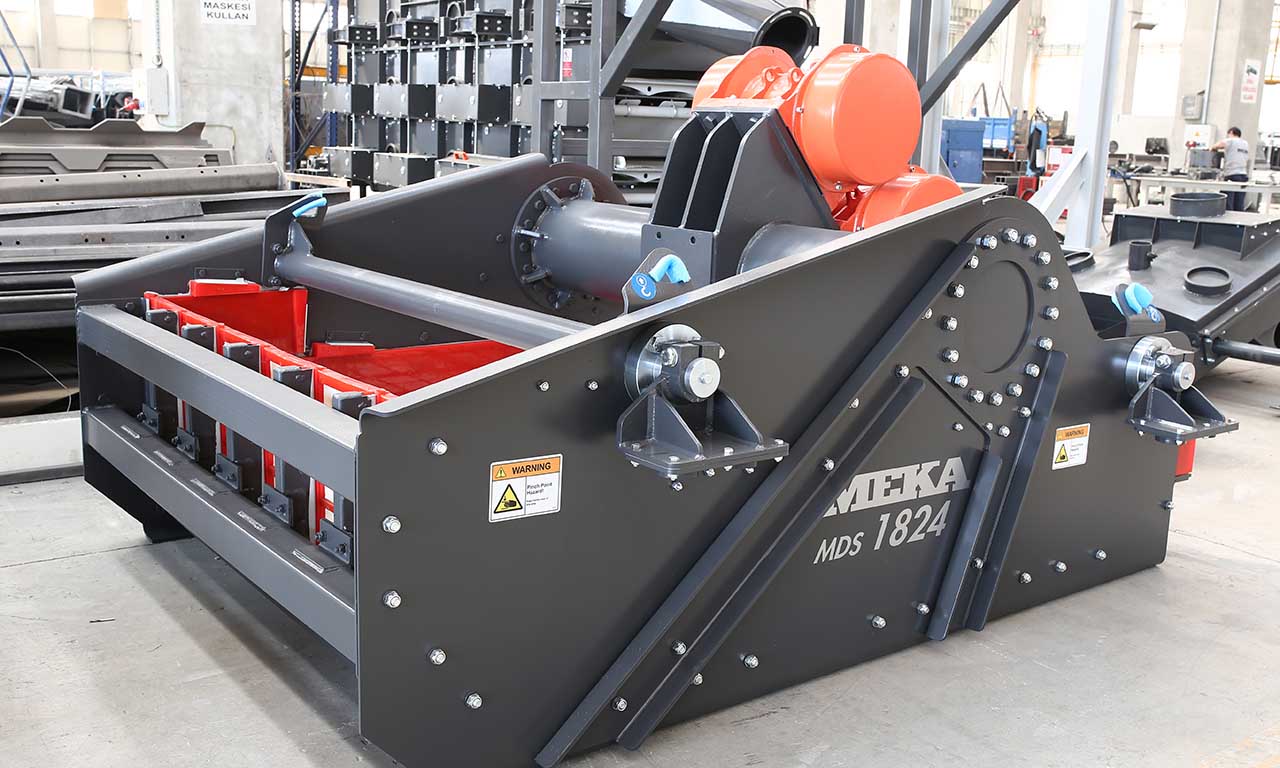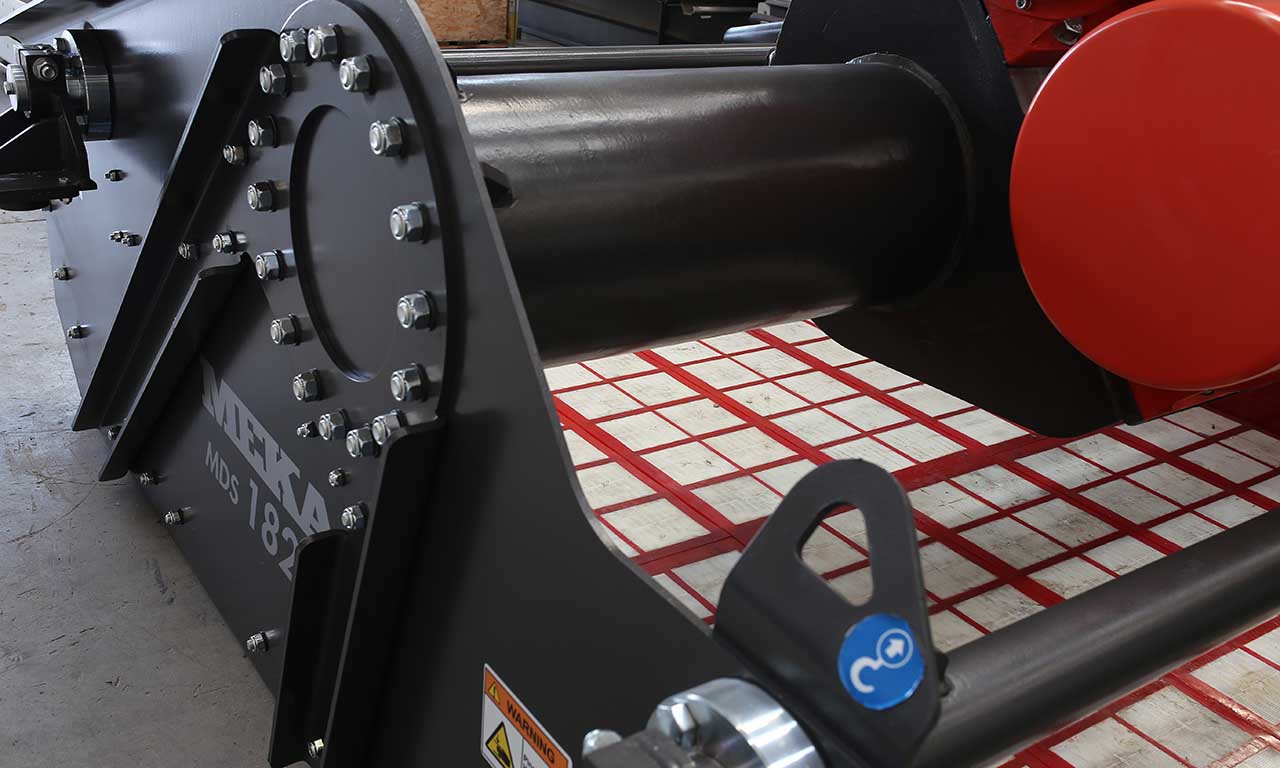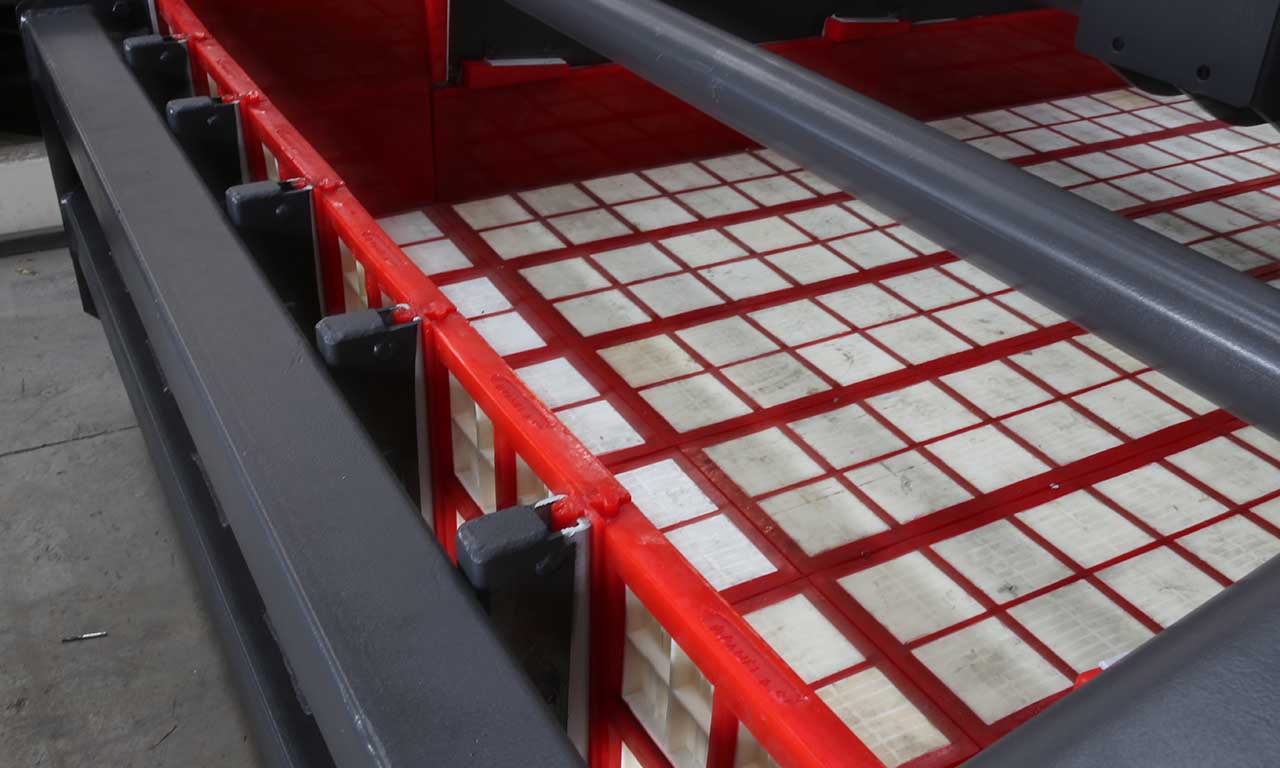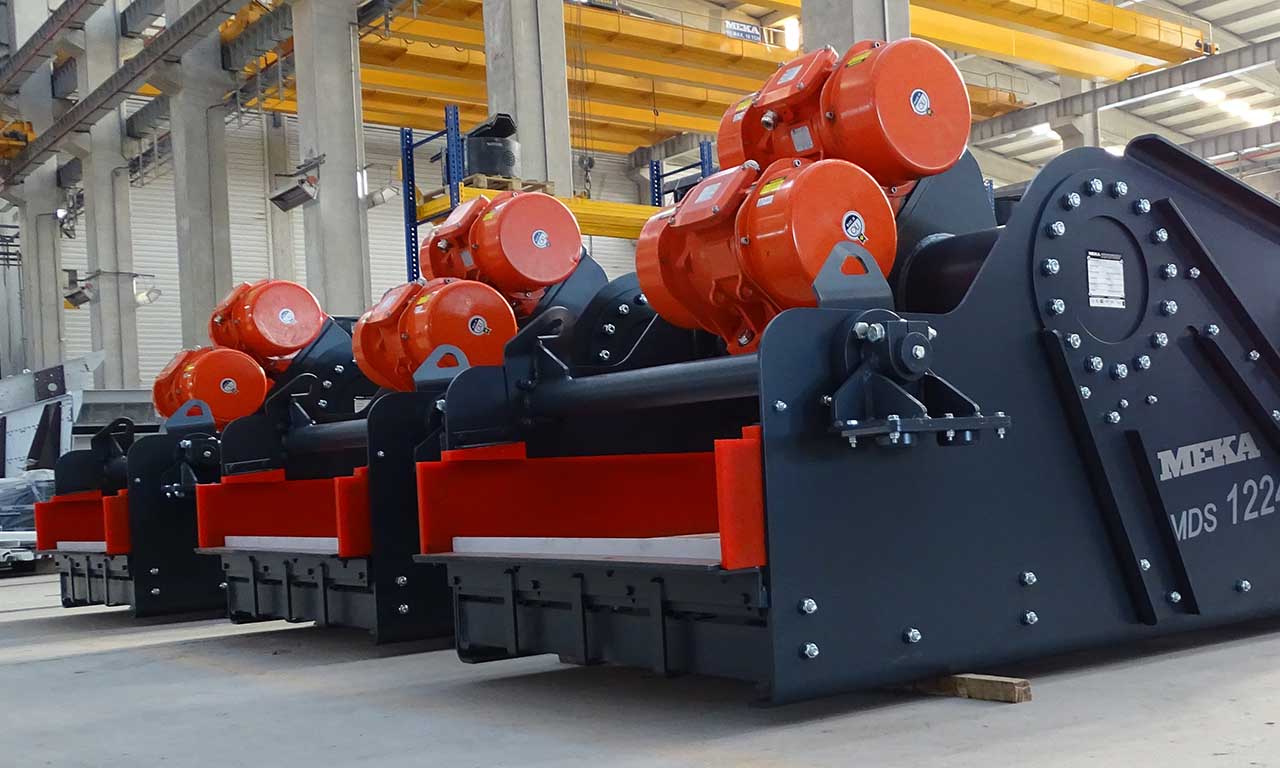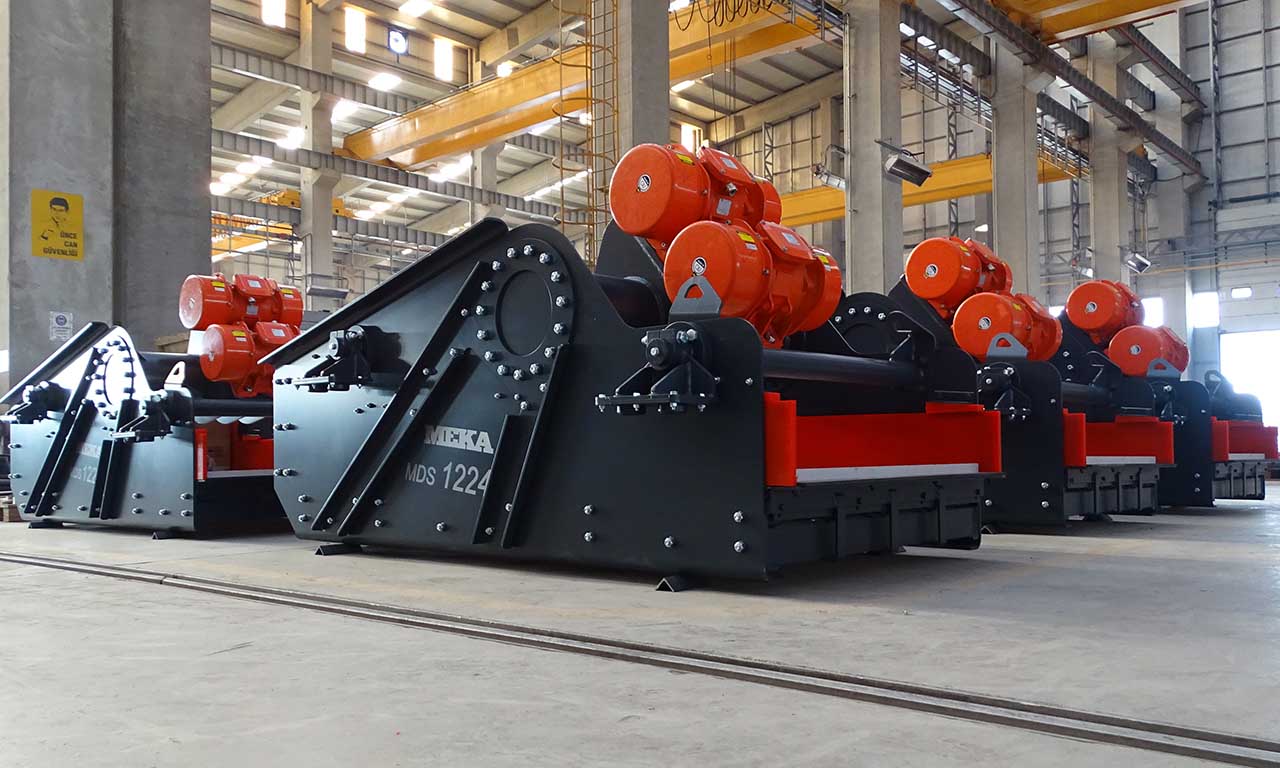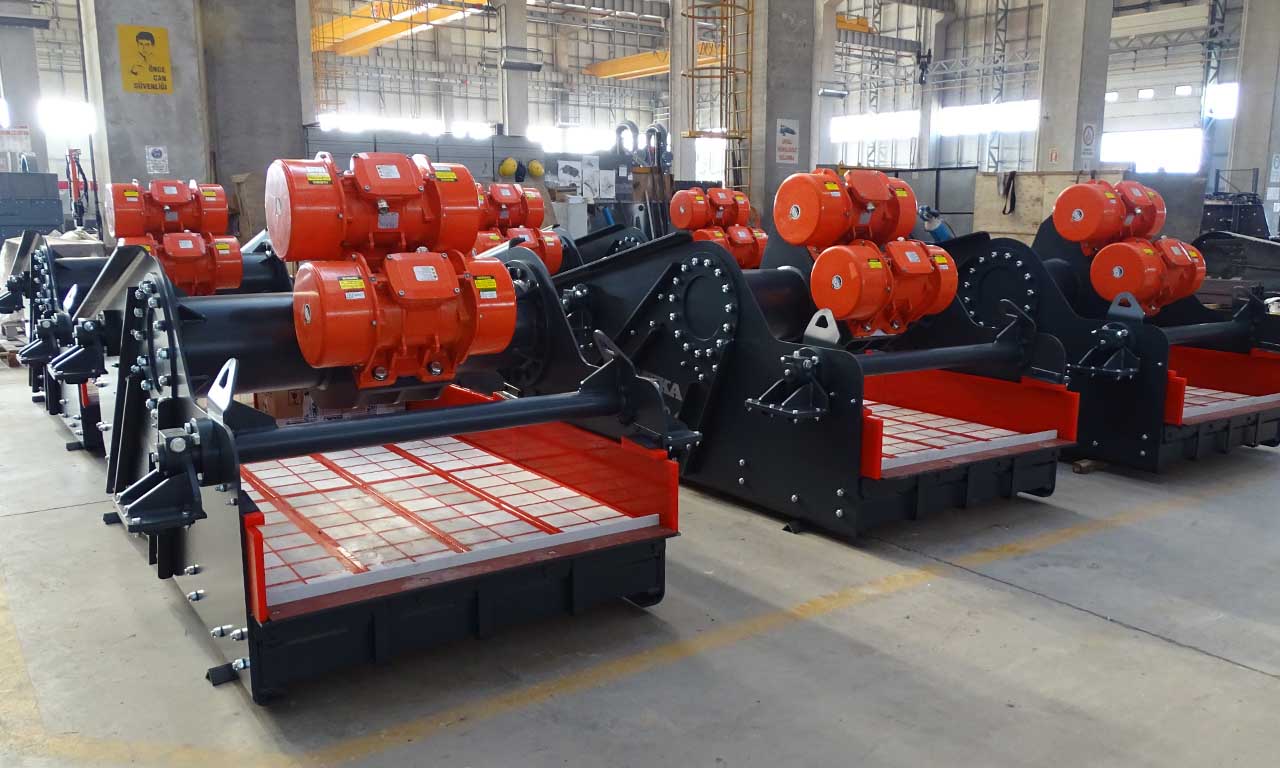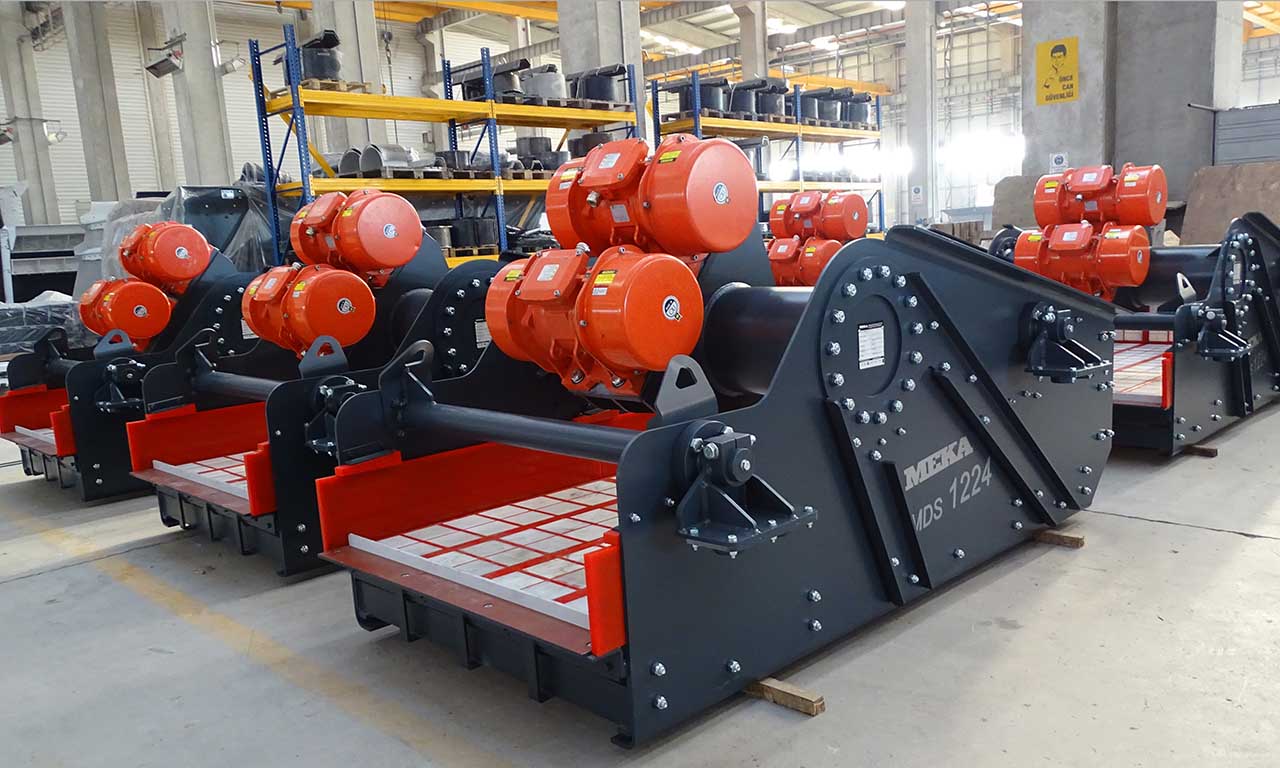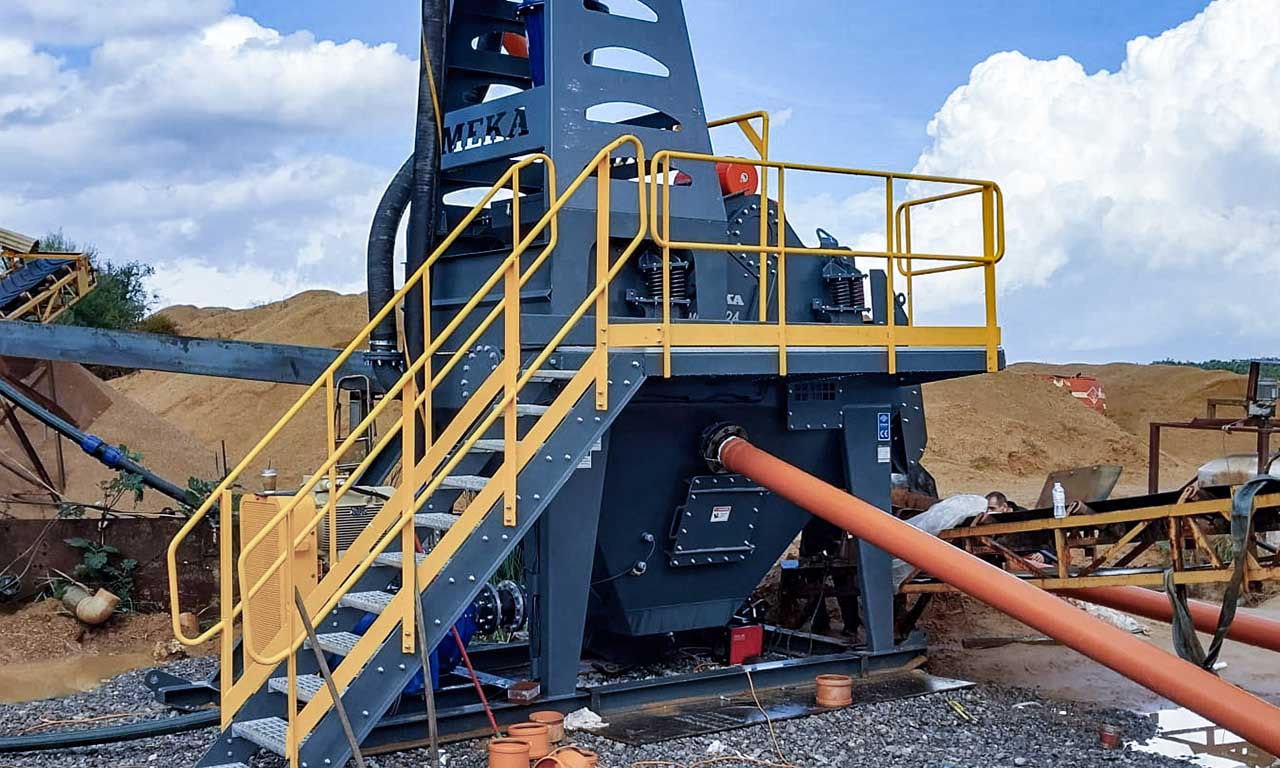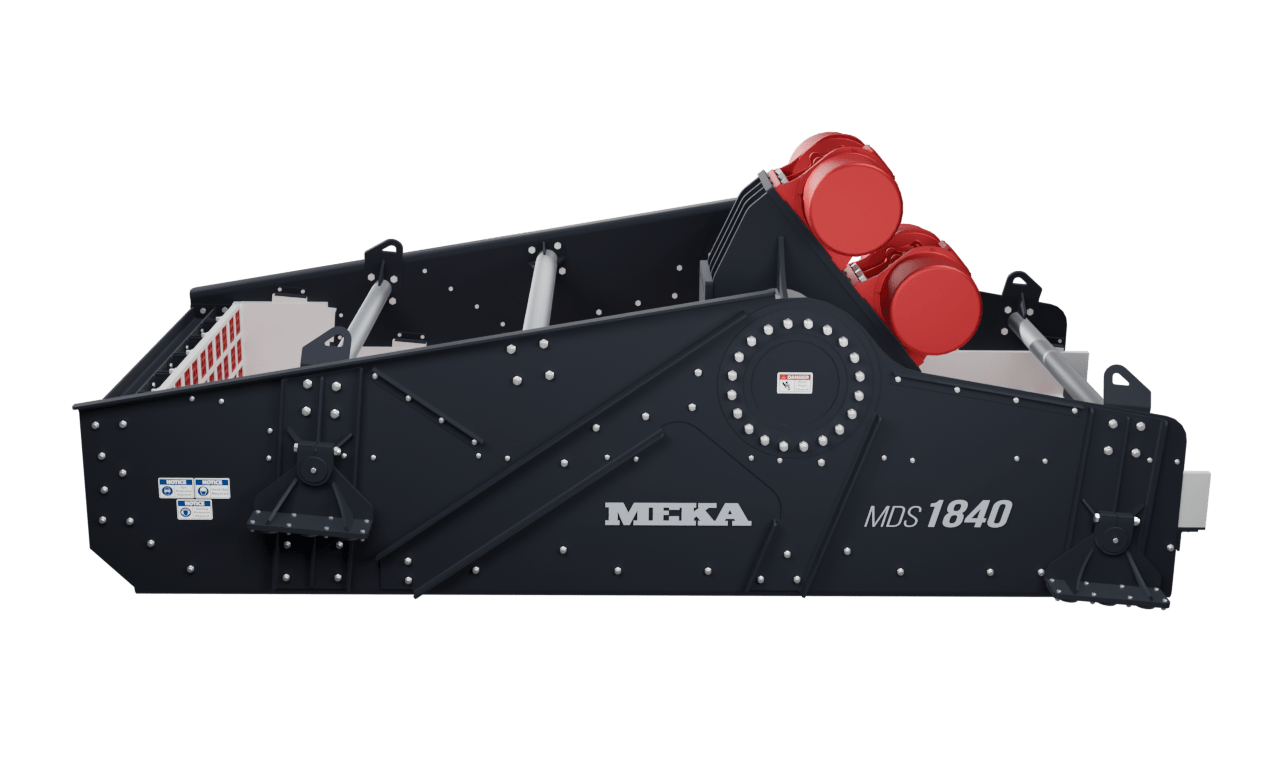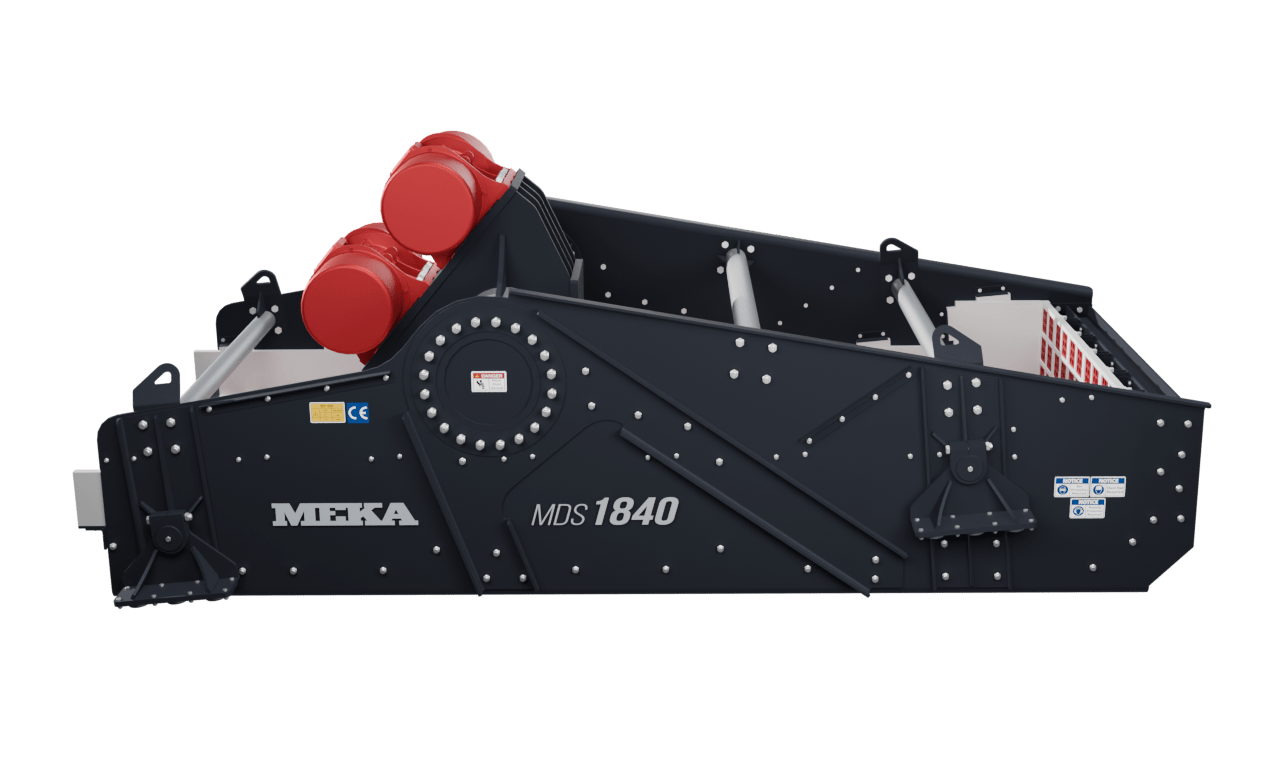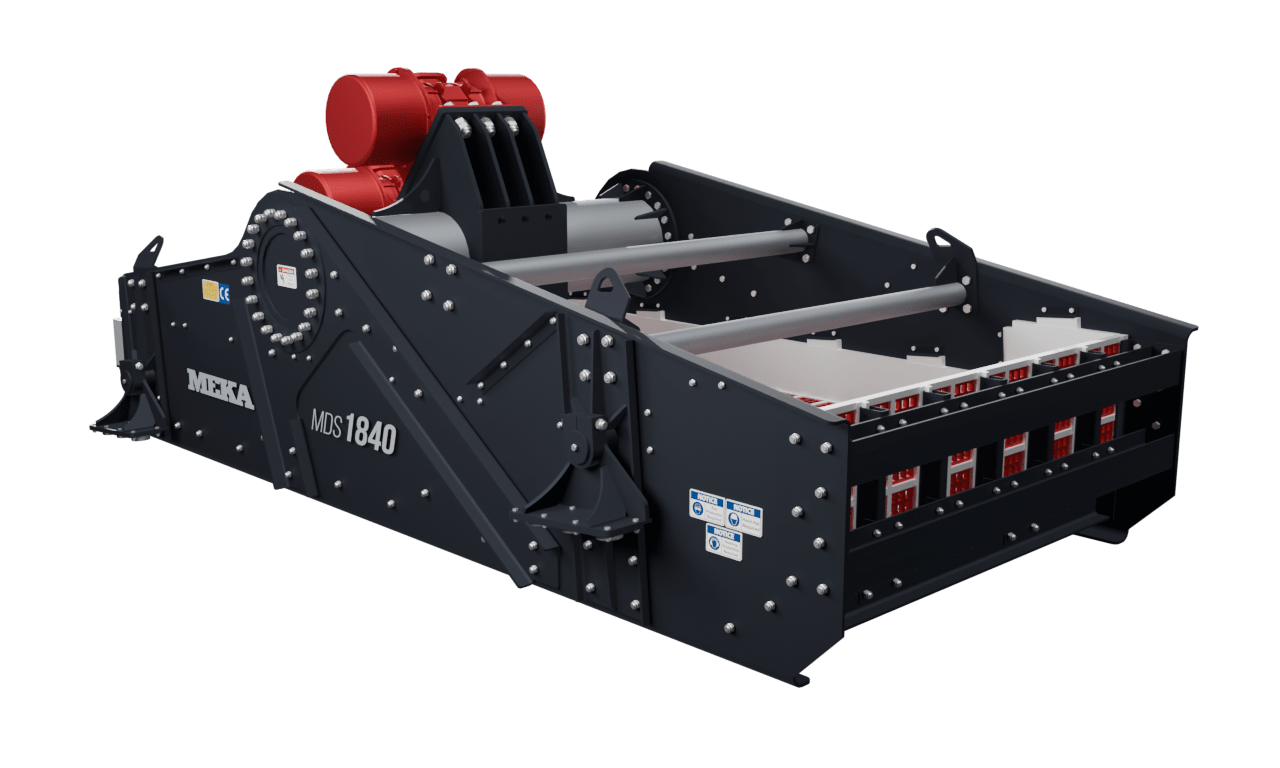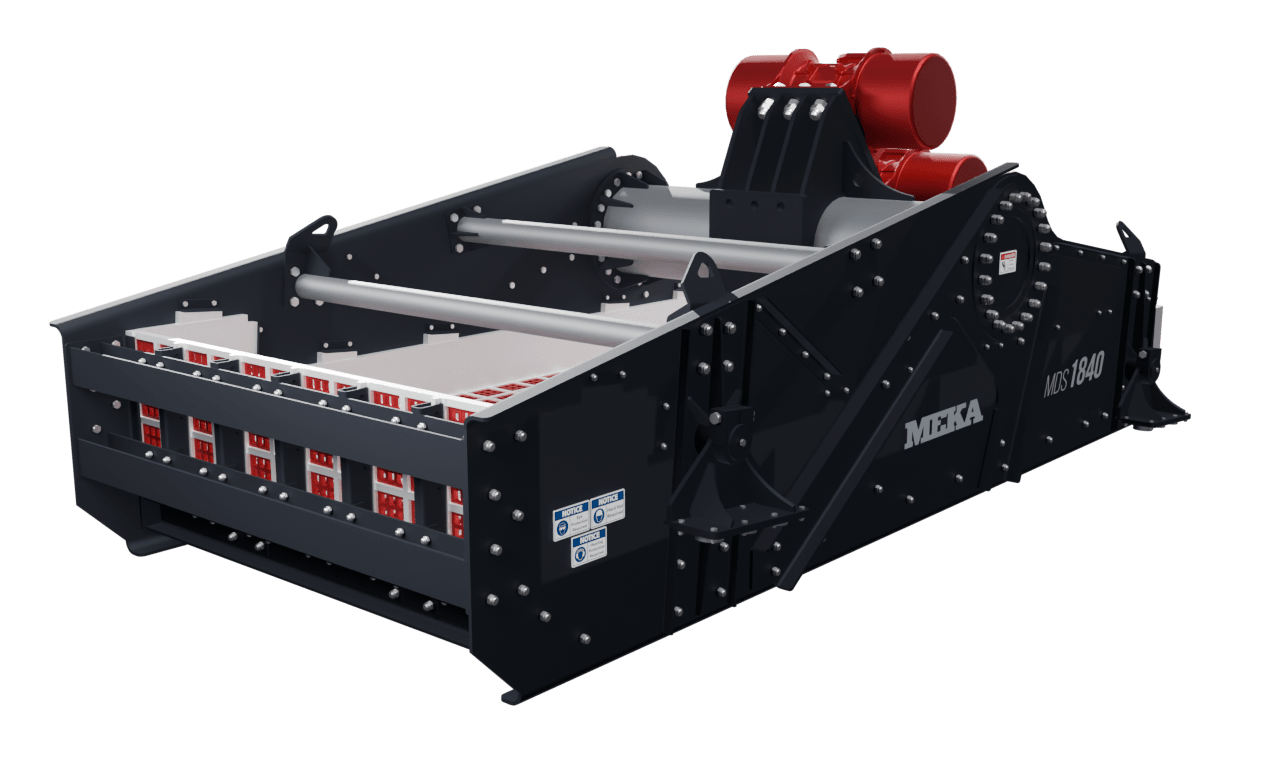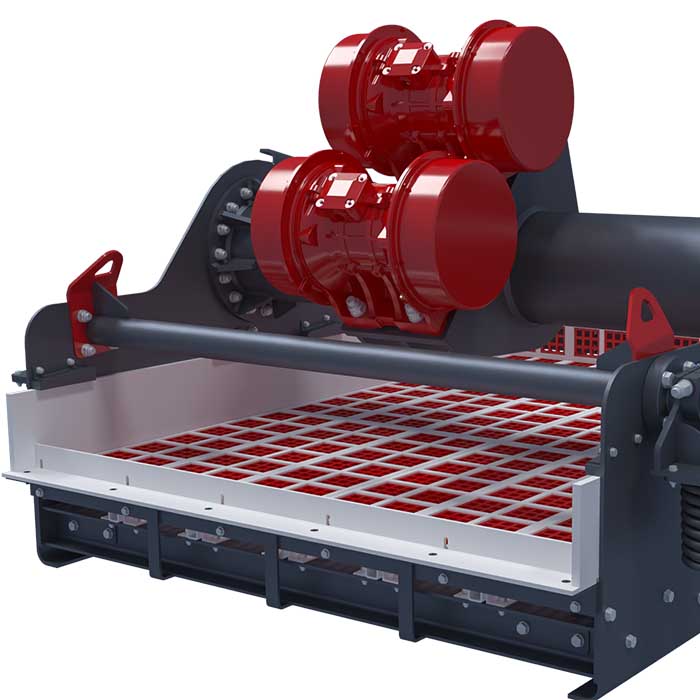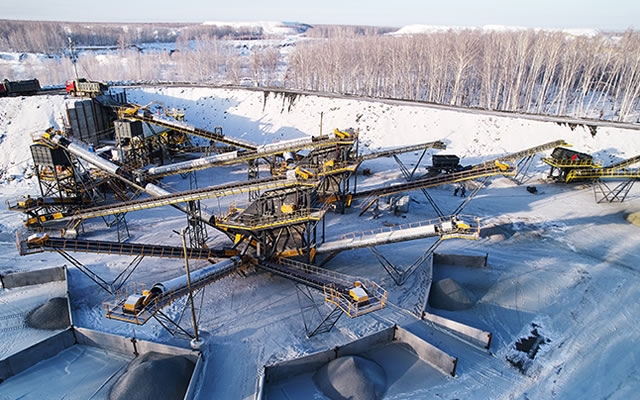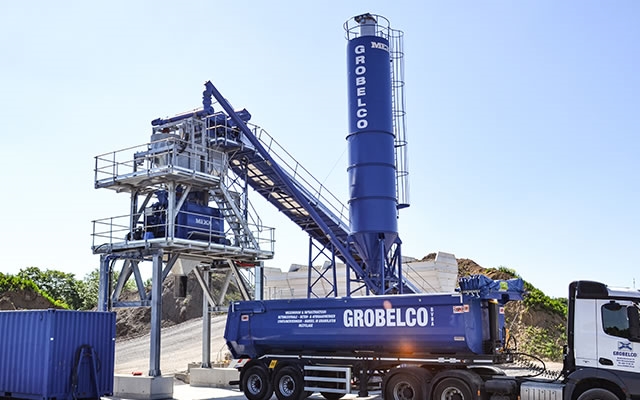Susuzlaştırma elekleri üzerinde bulunan vibro motorlar tarafından oluşturulan yüksek frekans ve G kuvveti ile yıkanmış kumu susuzlaştırır. Elek üzerinde bulunan WS 85 susuzlandırma panellerinin kılcal boşluklarından kum içerisindeki serbest su deşarj edilerek kumun son ürün olarak alınması sağlanır.
Susuzlaştırma Elekleri
MDS Serisi
Susuzlaştırrma Elekleri
Susuzlaştırma elekleri tipik olarak tek katlı, ayarlanabilir eğimli olup aynı zamanda doğrusal titreşim hareketi ile çalışmaktadır. Genel olarak yıkanmış kumun stoklamadan önce susuzlaştırması için kullanılan eleklerdir. Aynı zamanda agrega susuzlaştırma proseslerinde de kullanılmaktadır.
Ekstra güçlü gövde yapısı, vibro motorlu tahrik sistemi ve ısıl işlem yapılmış motor konsolu uzun hizmet ömrü sağlar.
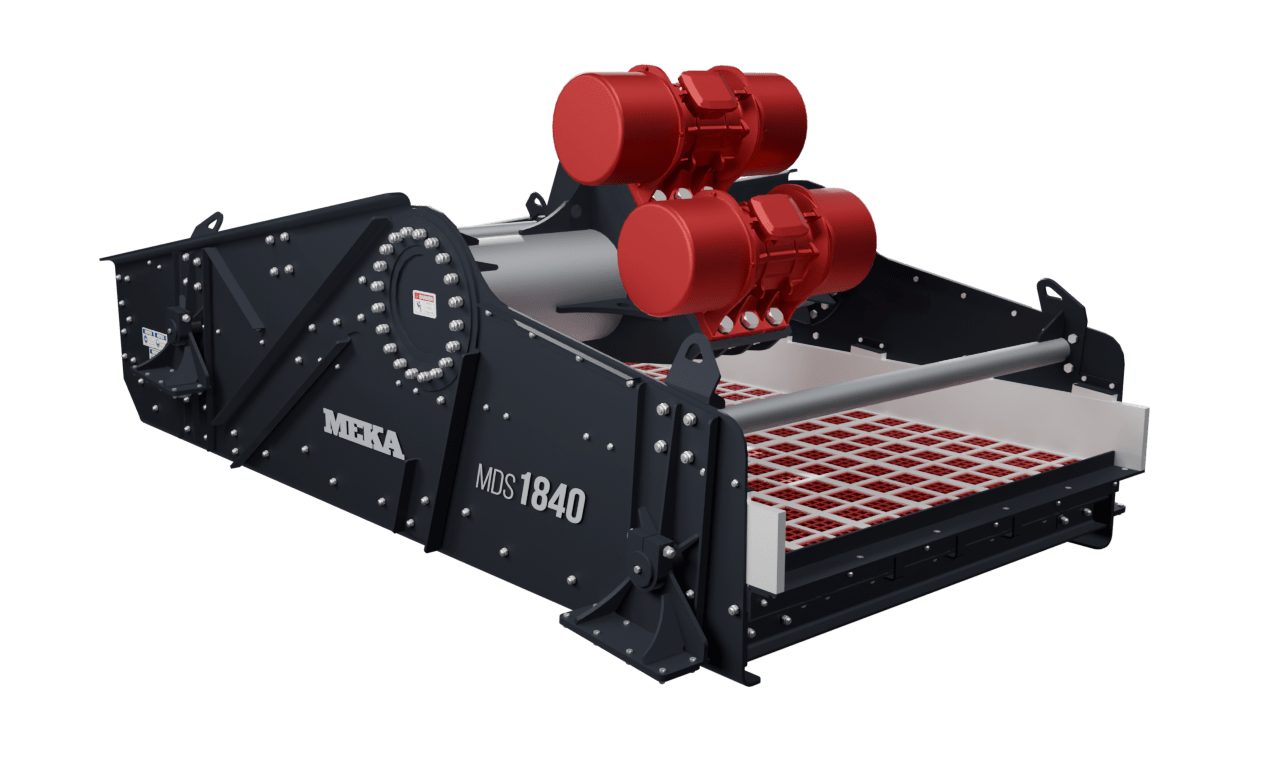
Uygulamalar
Susuzlaştırma elekleri genel olarak kum yıkama operasyonları sonrasındaki susuzlandırma işlemlerinde kullanılmaktadır. Bunun haricinde aşağıda belirtilen farklı uygulamalarda da tercih edilmektedirler;
- Agregalar (inşaat)
- İnşaat ve Yıkım Atıkları
- Kömür
- Diğer Maden Cevherleri
Neden MEKA Susuzlaştırma Elekleri?
- Kum ürününüzde maksimum susuzlaştırma
- Susuzlaştırma elekleri yüksek frekans ve G kuvveti etkisi altında çalışarak yıkanmış kumun en verimli şekilde susuzlaştırılmasını sağlar.
- Maksimum aşınma direnci
- Susuzlaştırma eleklerinde, WS 85 poliüretan susuzlaştıma panelleri ve polietilen yan duvar astarları kullanılarak aşınma direnci maksimize edilmektedir. Bu sayede çalışma ömrü uzamakta, bakım periyotları minimum seviyede tutulmaktadır.
- Yıkanmış kumun verimli bir şekilde susuzlaştırılması
- Daha derin yatak, eleklerin daha fazla nem gidermesini ve satılabilir ürünün en yüksek yüzdesini tutmasını sağlar.
- Bakım Kolaylığı
- Susuzlaştırma eleği üzerinde bulunan vibro motorlar bakım ihtiyacı duymadığından uzun süreli kullanım ömrü sağlar.
- WS 85 susuzlaştırma panelleri civatasız bağlantı sistemi sayesinde kolay bakım ve değişiklik yapılmasına imkan tanır.
- Gövde çatlaklarını önleyen yekpare, kaynaksız yüksek kalite gövde sacı
- Susuzlaştırma eleklerinde kullanılan yekpare yüksek kalite gövde yan sacları sayesinde, gerilim yoğunlaşması olasılığı ortadan kaldırılarak gövde çatlamalarının önüne geçilir.
Susuzlaştırma Elekleri Teknik Özellikler
MDS 1224 |
MDS 1824 |
MDS 1840 |
|
| Genişlik x Uzunluk (mm) Genişlik x Uzunluk (feet) | 1200x2400 3x8 | 1800x2400 6x8 | 1800x4000 6x13,1 |
| Güverte Sayısı Güverte Sayısı | 1 1 | 1 1 | 1 1 |
| Güç @50Hz (kW) Güç @50Hz (HP) | 2x2,88 2x3,86 | 2x7,35 2x9,85 | 2x6,1 2x8,18 |
| Güç @60Hz (kW) Güç @60Hz (HP) | 2x3,9 2x5,22 | 2x6,6 2x8,85 | 2x6,4 2x8,58 |
| *Ağırlık (kg) *Ağırlık (lbs) | 1800 3698 | 2645 5831 | 4092 9021 |
Kapasite değerleri sadece gösterge niteliğindedir, sonuçlar besleme gradasyonuna, silt, kil içeriğine, yoğunluğa, kullanılan su miktarına, ekipman konfigürasyonuna ve uygulamaya bağlı olarak değişebilir.
Gösterilen ağırlıklara tahrik motoru paketi, destek ayakları, bakım platformu, giriş ve çıkış olukları dahil değildir.
-
MEKA Susuzlaştırrma Elekleri Kataloğunu İndirin
MEKA Susuzlaştırma Eleklerinin Üstünlükleri
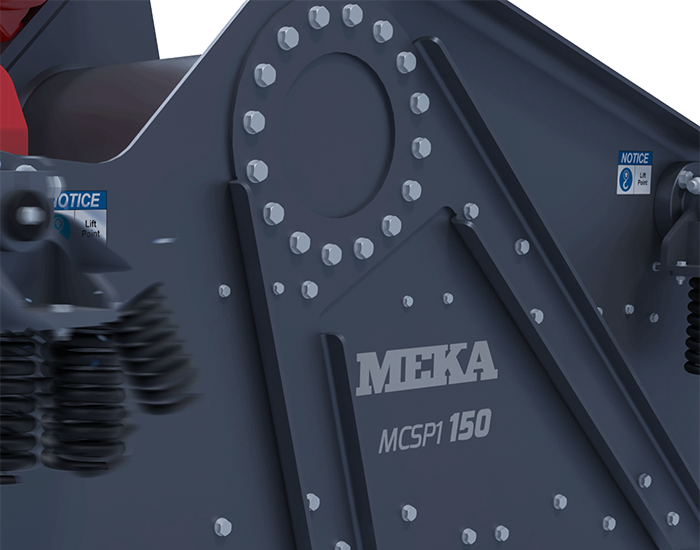
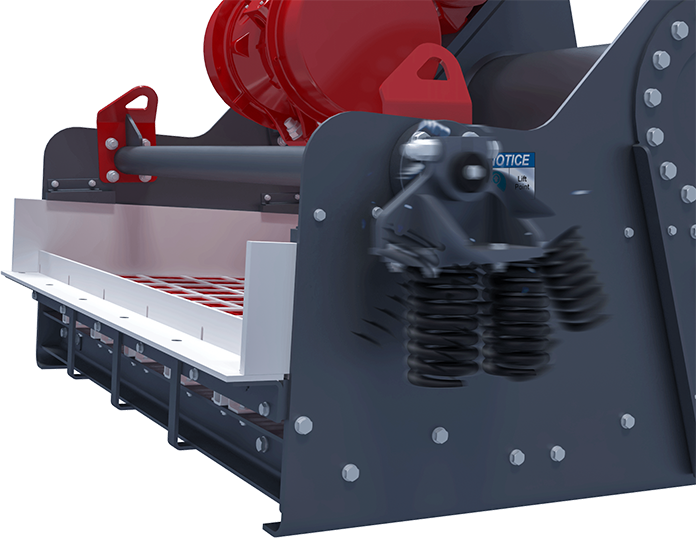
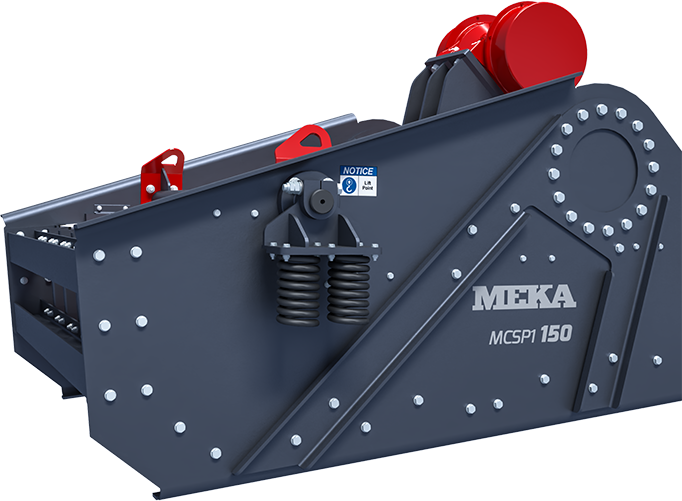
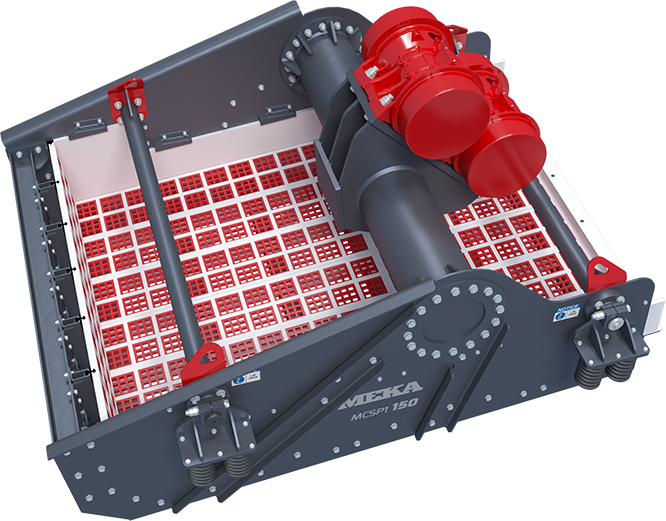
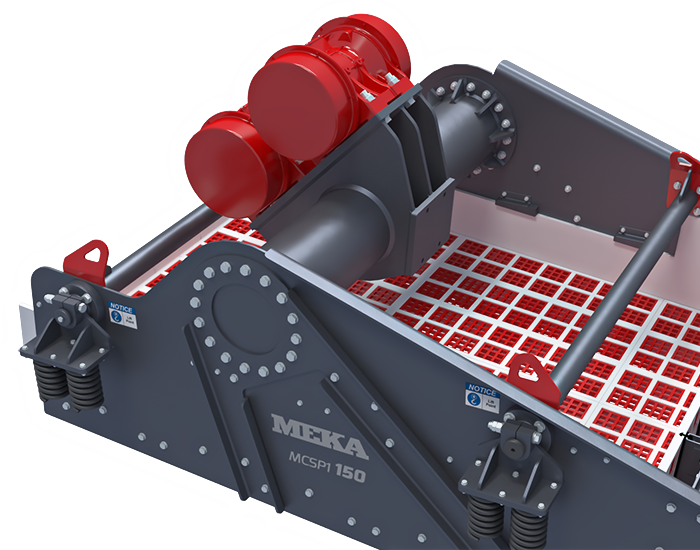
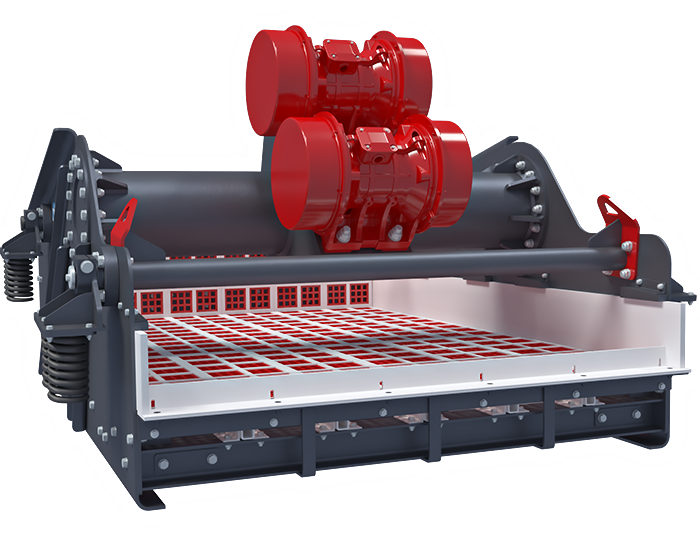
Susuzlaştırma Elekleri Nedir?
Susuzlaştırma elekleri, genellikle madencilik, taş ocağı, kum-çakıl üretimi, atık su arıtma ve sanayi uygulamalarında kullanılan bir ekipmandır. Bu elekler, malzemelerden fazla suyu uzaklaştırmak ve katıların ayrıştırılmasını sağlamak amacıyla tasarlanmıştır. Malzemeler elek yüzeyine beslenerek titreşim ve eğim sayesinde su ayrılırken katı malzemeler elek üzerinde ilerler. Ana işlevleri, suyun malzeme ile birlikte hareket etmesini engelleyerek katıları ayrıştırmak ve malzemenin nem oranını düşürmektir.
Susuzlaştırma Elekleri Nasıl Çalışır?
Susuzlaştırma Eleklerinin Kullanmanın Avantajları
Susuzlaştırma Elekleri Kullanım Alanları
Hangi Malzemeler Susuzlaştırma Elekleri Kullanılarak İşlenir
Doğru Susuzlaştırma Eleği Seçiminde Temel Kriterler
- Yıkanmış kumun sudan arındırılmasını sağlayan düşük maliyetli ve etkili ekipmanlardır.
- WS 85 Susuzlaştırma panelleri sayesinde bakım kolaylığı sağlanır.
- Susuzlaştırma eleği kum yıkama haricinde farklı endüstrilerde de kullanılır.
- Su içeriğini azaltarak ürün kalitesini arttırır.
- WS 85 Susuzlaştırma panelleri sayesinde su geri kazanımı maksimize edilerek çevre düzenlemelerine uyumluluk sağlanmasına yardımcı olur.
- Susuzlaştırma eleği kum yıkama haricinde farklı endüstrilerde de kullanılır.
- Su içeriğini azaltarak ürün kalitesini arttırır.
- WS 85 Susuzlaştırma panelleri sayesinde su geri kazanımı maksimize edilerek çevre düzenlemelerine uyumluluk sağlanmasına yardımcı olur.
Susuzlaştırma elekleri; kum, agrega, cevher hazırlama ve zenginleştirme tesislerindeki ürünlerin susuzlaştırma operasyonlarında kullanılır.
Susuzlaştırma elekleri kum, çakıl, kırılmış agregalar, frak kumu, endüstriyel kumlar, mineral kumlar, sert kaya, değerli metal cevheri, kömür, demir cevheri, tuz ve diğer granül malzemeler gibi çeşitli farklı uygulamalarda, malzemeden serbest suyu çıkarmak için kullanılır.
Doğru susuzlaştırma eleğinin seçiminde kapasite, malzeme besleme dağılımı, son üründeki su yüzdesi gibi kriterler göz önünde bulundurulmalıdır.
Dünya Genelindeki Projelerimizi Keşfedin
Bizimle İletişimde Kalın
Yeni projelerimiz ve ürünlerimiz hakkında bilgi sahibi olmak ve MEKA’dan haberleri ilk öğrenen olmak için e-bülten’imize hemen abone olun!



